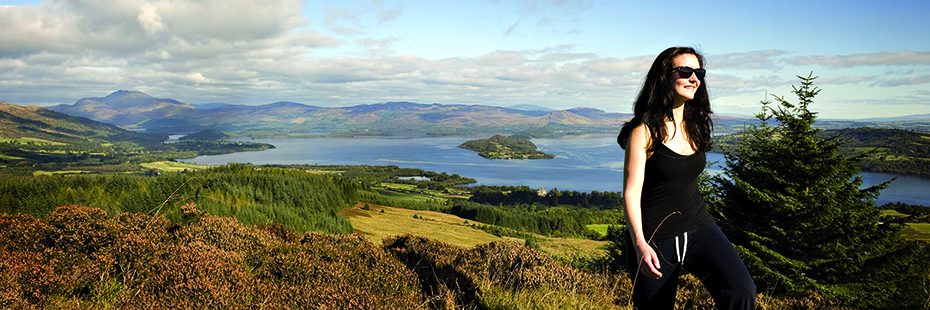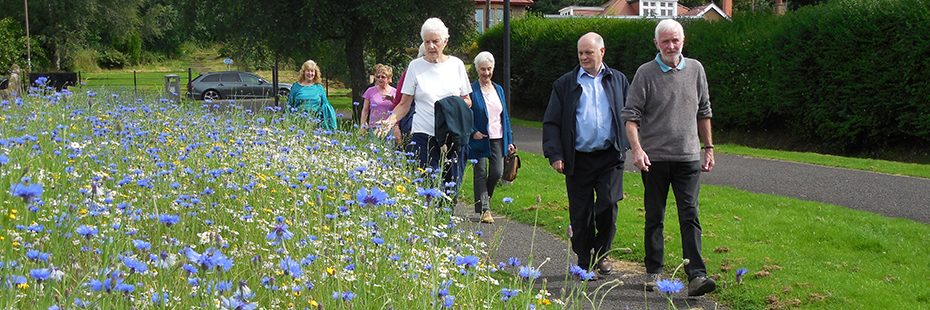
£5 million funding transforming access to the outdoors in Loch Lomond & The Trossachs National Park
There is change afoot across the lochs, hills and glens of Loch Lomond & The Trossachs National Park. Residents may have spotted signs of it in their area like a new section of walking route or a bridge adapted for horses; and visitors may have found their favourite cycle path now goes further or discovered new places to put their canoes in the water. But few may have realised the scale of transformation that has been taking place across the National Park in the past three years.
The driver of this change is the National Park Authority’s Outdoor Recreation Plan 2013-2018 – a five-year action plan, which identified gaps and opportunities in the National Park’s recreation provision. The Plan set out 69 actions and 88 aspirations that give focus and direction for the Park Authority and its many partners involved in the development and improvement of access and recreation opportunities in the National Park.
Since the Outdoor Recreation Plan was published in 2013 £5 million has been invested and more than 450 miles of routes have been opened up, through 29 projects delivered in collaboration with and funded by 72 partner organisations.

John Muir Way
Major long-distance walking and cycling routes have been opened up as part of the programme. The 134-mile John Muir Way has been connected through the National Park with the completion of the missing link on Gouk Hill. The community-led project to open up the Loch Earn Railway Path completed its second phase in August 2016 on the mixed use path between Lochearnhead, St Fillans and Comrie. When complete the path will help to form part of the cross-Scotland Pilgrim’s Way from Iona to St Andrews – a priority route within Scotland’s National Walking and Cycling Network.
Upgraded paths are making the outdoors more accessible for people of all abilities. A key aim of the Outdoor Recreation Plan is to improve the health of people living in and around the National Park by working with projects that improve opportunities for people who would not normally get out in the Park to do so. Catering to over 100 walkers, the National Park Health Walks project has seen the development and growth of this healthy walks programmes for the inactive. Free group walks are offered weekly by the Countryside Trust and people can sign up themselves or be prescribed these walks by GP’s.

Callander Health Walk
A paper for the National Park’s Board meeting on Monday 24th October outlines the many projects, big and small, that have been delivered. In addition to the 29 projects that have been completed, 23 more are currently underway.
Gordon Watson, Chief Executive Loch Lomond & The Trossachs National Park said:
“Each one of these projects in itself is making an important improvement to how people can enjoy the National Park, but taken together the scale of change is significant. When we published the National Park’s Outdoor Recreation Plan in 2013 our aim was to transform access across the Park and get more people active in the outdoors, and it is fantastic to see that happening.
“This year has been significant in the delivery of these goals, as we see the work of the first few years of the Outdoor Recreation Plan bearing fruit on the ground. It has also been significant in helping improve the health and wellbeing of both residents and visitors. There are activities and routes available for recreation at any level, whether its flying along mountain bike tracks in Aberfoyle or joining in GP-prescribed health walks on some of the new and improved paths close to home.
“Improving and expanding the ways that people can enjoy the stunning landscape of the National Park is a key role of Loch Lomond & The Trossachs National Park Authority, and a priority for so many communities, businesses and organisations across the Park. Creating new and improved paths provides fantastic experiences for visitors and residents, protects our fragile habitats, helps land managers and boosts the economy. This work is only possible through collaboration with many partners, and we thank the communities, landowners, agencies and organisations for collaborating with us to deliver this ambitious plan.”
The £5 million in funding has come from a variety of funding sources including larger scale Heritage Lottery and Sustrans bids to smaller grants from Trusts and donations. The Park Authority has so far directly contributed £870,000 in the form of grants and contributions which have been used very effectively to secure additional funding. Many projects have also been initiated and delivered through local Community Development Trusts.

